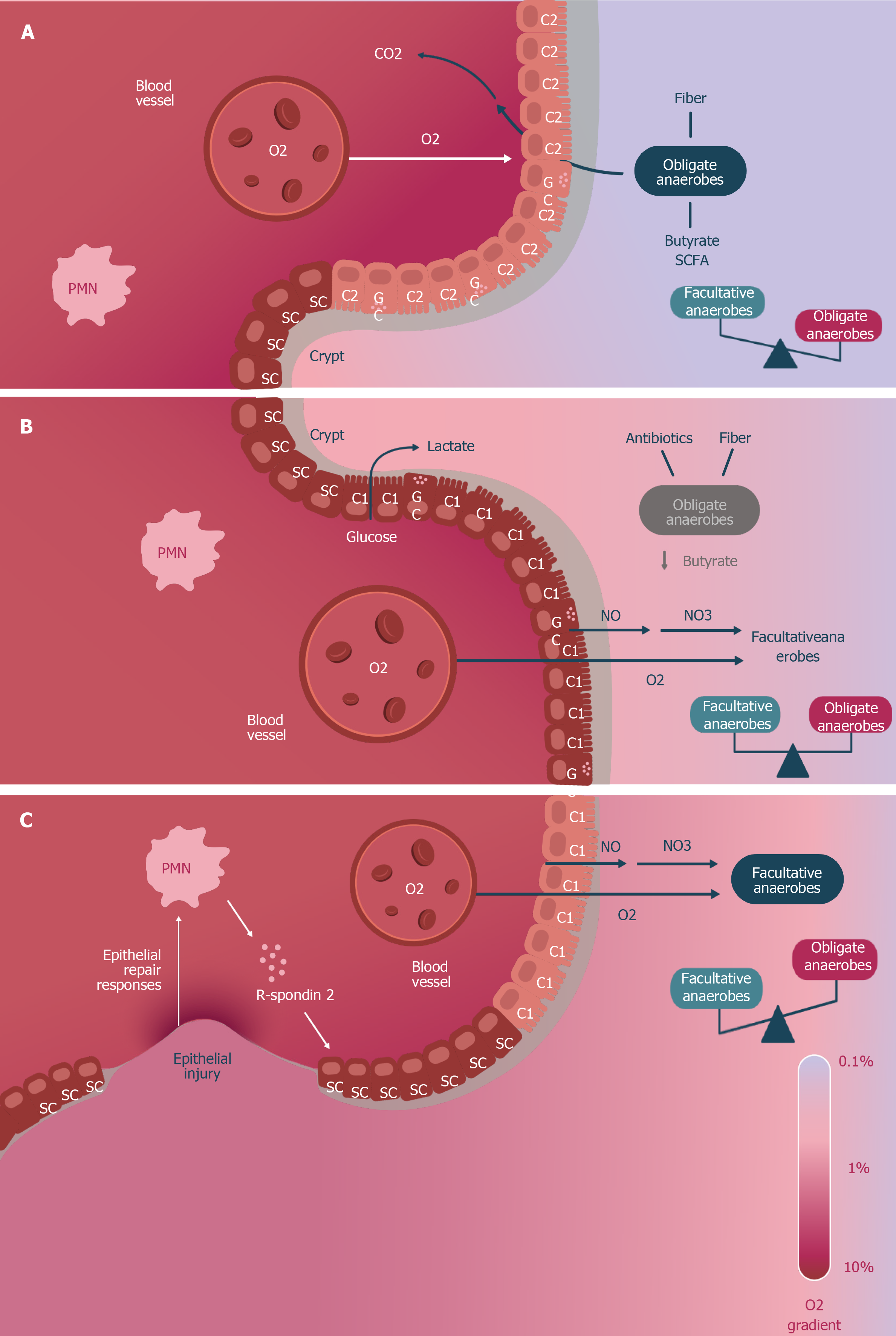Copyright
©The Author(s) 2021.
World J Clin Cases. Dec 26, 2021; 9(36): 11122-11147
Published online Dec 26, 2021. doi: 10.12998/wjcc.v9.i36.11122
Published online Dec 26, 2021. doi: 10.12998/wjcc.v9.i36.11122
Figure 2 Metabolic epithelial changes in dysbiosis due to loss of obligate anaerobes.
A: The eubiosis microbiome contains a significant number of obligate anaerobes that convert dietary fiber into short chain fatty acids (SCFAs), contributing to a C2-type epithelial trophism with high oxygen consumption (O2), which limits its diffusion to the intestinal lumen and maintains the epithelium in relative hypoxia; B: The deterioration of the microbiome with loss of obligate anaerobes and SCFAs orients the metabolism of the epithelium to a C1-type, with greater glucose fermentation, low O2 consumption, and generation of lactic acid and nitric oxide (NO). The higher partial pressure of the O2 not consumed by the C1 colonocytes and the conversion of NO to nitrate (NO3-) causes an overgrowth of facultative anaerobes; C: The persistence of the loss of strict anaerobes and their fermentation products ends up causing epithelial damage (via polymorphonuclear neutrophils R-spondin 2), the response of which is crypt hyperplasia and the multiplication of stem cells (SCs). The sustained increase in NO3- and O2 contributes to the persistence of facultative anaerobes and dysbiosis. This figure is based upon data published in reference 39.
- Citation: Ceballos D, Hernández-Camba A, Ramos L. Diet and microbiome in the beginning of the sequence of gut inflammation. World J Clin Cases 2021; 9(36): 11122-11147
- URL: https://www.wjgnet.com/2307-8960/full/v9/i36/11122.htm
- DOI: https://dx.doi.org/10.12998/wjcc.v9.i36.11122









